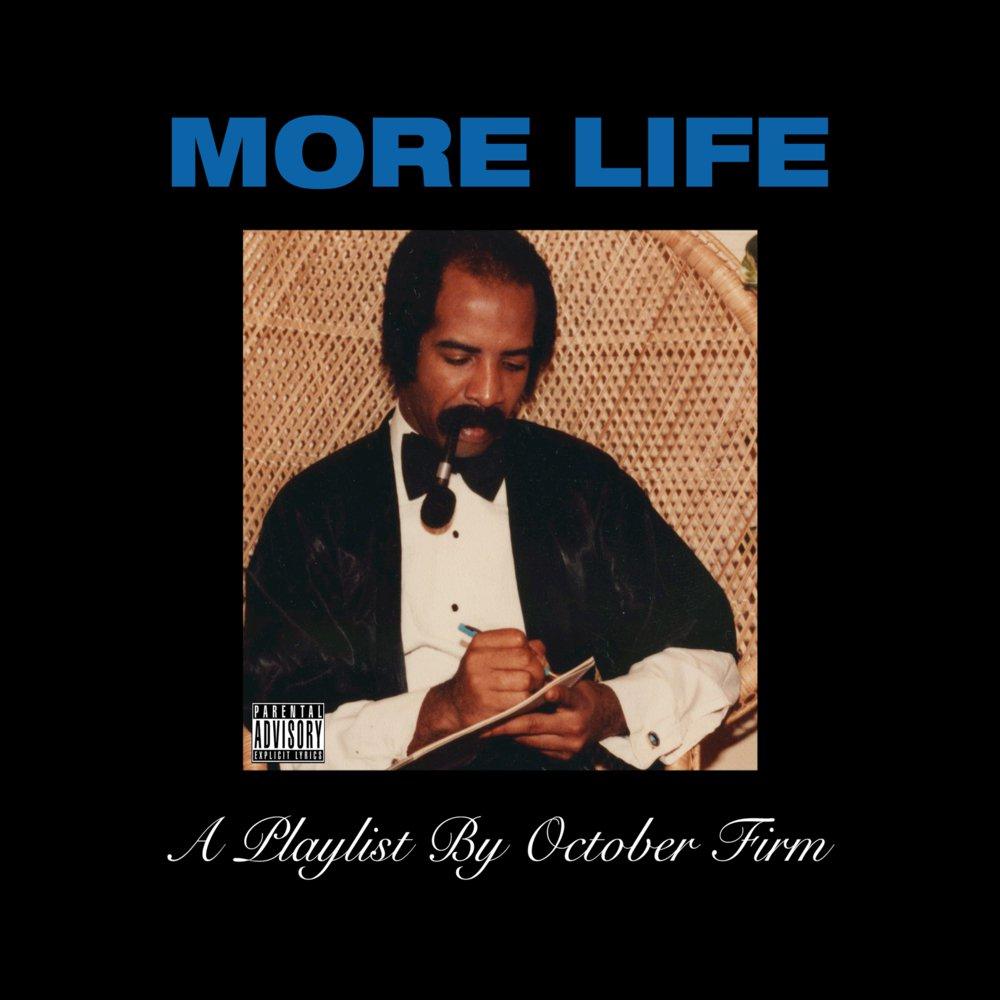BY PARKER KLYN
Halfway through Drake’s latest project, the “playlist” More Life, the Toronto pop star (and biggest rapper alive) drops a hilariously thickheaded self-insult: admonishing other rappers for “biting everybody,” or stealing their style. That line is dense, not because Drake’s not being stolen from, because he is; it’s dense because no rapper parrots other artists’ styles more than him, and More Life is the culmination of all the genres and sounds that Drake has cultivated for himself.
Drake’s list of grievances is extensive: he’s hopped on remixes of Migos’ “Versace” and iLoveMakonnen’s “Tuesday” just as they were starting to get popular. “Hotline Bling” is essentially a remix of D.R.A.M.’s “Cha Cha,” he also recorded a rushed mixtape with Future at the height of his popularity and he’s used posthumous recordings from the late Aaliyah and Pimp C to accentuate his music.
But on More Life, Drake doesn’t stop at hopping on individual artists’ bandwagons. Here, he takes entire genres that are at the artistic peaks within their musical divisions (Jamaican dancehall within reggae, English grime and Atlanta trap within hip-hop,) and puts a polished pop gloss on them. But despite the lack of authenticity that More Life displays, the project works out well, as Drake treats this music with passion, and that’s to be expected of somebody from the intensely multi-cultural Toronto (which has very concentrated Caribbean and British populations).
The first big surprise that More Life has to offer is grime veteran Giggs’ verse on “No Long Talk.” (For those uninitiated, grime is British hip-hop.) The track’s beat is far slower in tempo than most grime instrumentals, and Giggs comes through with an intensely focused verse that is sure to be thousands of people’s introduction to hip-hop from the United Kingdom. The track’s an intimidating trunk-rattler; if you don’t think an English accent can sound intimidating, this might prove you wrong.
There are other bangers on More Life, with origins from all over the globe. “Gyalchester” has these awesome rasta slang ad-libs and interjections and a monstrous bassline, while Atlanta’s 2 Chainz, Quavo, Travis Scott and (a surprisingly coherent) Young Thug all do their thing on “Portland,” “Sacrifices” and “Ice Melts.” But the most intense moment on More Life isn’t even a Drake song; it’s a solo track from the most famous British rapper alive, “Skepta’s Interlude.” Skepta comes up with a dozen ways to tell us how much money he has, and the snake charmer flute and synthesized horns on the riddim accentuate how global of a project this is.
Despite the relative success of the bangers, they’re relatively forgettable – where More Life really shines is when it turns to pure pop. I’ve always maintained that Drake is a better pop star than rapper, and More Life only strengthens that belief. “Passionfruit” is a blissful piece of tropical house, with ethereal synthesizers placed over a relaxing dancehall beat. Editing out the minute-long intro, it’s probably the closest thing More Life has to a radio single (aside from the months-old “Hotline Bling” clone “Fake Love”).
“Get It Together” is more indebted to British house, with a rambling, fantastic vocal performance from newcomer Jorja Smith, who makes her major-label debut as a teenager. Even PARTYNEXTDOOR surprisingly comes through with a compelling vocal performance on “Since Way Back,” which is new for the usually-sleepy OVO cornerstone. And finally, the best song on More Life is “4422,” which is a spiritually powerful solo Sampha track; Sampha keeps impressing after his great debut earlier this year.
I’ve said a lot of good things about More Life, but it has major flaws. The biggest problem with this project is its length: 22 tracks spread out over an hour and 21 minutes. That’s way too long for a pop album, but it’s to the album’s testament that I can only name a few songs that I’d definitely leave out (namely “Fake Love,” “Nothings into Somethings” and “Blem”). Just about the entire record is pleasant to the ears, but aside from a few scattered moments (like Giggs’ verses, the Jennifer Lopez sample on “Teenage Fever,” the beat of “Passionfruit,”) More Life isn’t exhilarating. It’s fantastic background party music, but the lyrics and beats don’t exactly make for a compelling listen.
Still, More Life doesn’t feel like a one-note slog in the vein of If You’re Reading This It’s Too Late or Views. It’s Drake’s best project in years; for the first time since at least 2013, Drake seems like he’s having fun making music. I think a lot of that comes from finding new sounds that he loves; he operates within that interesting mix of teacher and student regarding these genres. And after More Life, I’m holding out hope that his embrace of global music and worldly sounds expands into the entire pop sphere.







